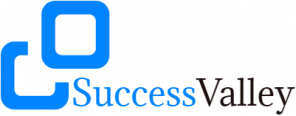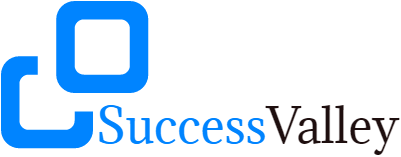Mastering the selling process
About This Course
Close more deals and improve the performance of any sales team. This course is designed to make you more effective and efficient as you pursue your sales goals. Understand how to stand out in the crowd, attract customers, and build support for your initiatives within your company.
Knowing how to “get to yes” is a crucial skill that can improve many facets of your life. Prepare to be tested, taught, and transformed as you learn to locate new customers and get great results.
Learning Outcomes: By the end of this part of the course, participants will be able to:
- Identify potential customers and create a customer profile
- Develop a value proposition that addresses customer needs and differentiates from competitors
- Use different marketing channels to generate leads and create a sales pipeline
- Conduct effective sales conversations that build rapport and uncover customer needs
- Qualify leads effectively and disqualify those that are not a good fit
- Handle objections and negotiate effectively to close deals and build long-term relationships with customers.
Learning Objectives
Create several sales necessary tools that are essential to becoming a high-performer in sales. These tools are based around the foundation of knowledge, skill and discipline.
Each tool makes up the Sales Toolkit, which is a living document to guide you through each and every step of the sales process.
Material Includes
- Videos
- Booklets
Requirements
- None
Target Audience
- Saleman, salewoman
- Leaders, managers
- Staffs who want to get the promotion
Curriculum
15 Lessons6h
Customer Segmentation and Prospecting
Customer Segmentation and Prospecting are the first steps in the selling process. In this part of the course, participants will learn how to identify and target potential customers based on their characteristics, behavior, and preferences. They will also learn how to generate leads and create a sales pipeline that will help them achieve their sales goals.
It All Starts With a Goal
Selling is a Contact Sport
Selling Happens in a Conversation
Qualify, Hard and Early
Connecting with Sales Prospects
Connecting with sales prospects is a critical step in the sales process. It involves identifying potential customers, establishing contact, and building a relationship with them. Here are some key steps to connecting with sales prospects:
Research your prospects: Use online resources, such as social media, company websites, and professional networking sites, to research your prospects. This will help you to understand their needs, interests, and pain points, and to tailor your message to their specific situation.
Use personalized outreach: Instead of sending generic messages, use personalized outreach to grab the prospect's attention. Personalize your emails or messages with the prospect's name, company name, and reference any recent news or events that are relevant to their business.
Use a multi-channel approach: Don't rely on just one communication channel to connect with prospects. Use a multi-channel approach, including email, phone, social media, and in-person meetings, to reach your prospects and build a relationship with them.
Offer value: When connecting with prospects, focus on offering value rather than just selling. Provide helpful information, such as industry insights or relevant case studies, that demonstrate your expertise and value proposition.Follow up: Follow up regularly with your prospects to stay top of mind and maintain the relationship. Use a mix of automated and personalized follow-up messages to ensure that you stay connected without becoming a nuisance.
By mastering these skills, sales professionals can effectively connect with prospects and build strong relationships that lead to increased sales.
Learning Outcomes: By the end of this part of the course, participants will be able to:
Research prospects to understand their needs and interests
Use personalized outreach to grab the prospect's attention
Use a multi-channel approach to connect with prospects
Offer value and demonstrate expertise
Follow up regularly to stay top of mind and maintain the relationship.
Sales Pitch and Closing
Sales pitch and closing are essential components of the sales process. The sales pitch is a persuasive message that a salesperson delivers to a potential customer to convince them to buy a product or service. The closing, on the other hand, is the final step in the sales process where the salesperson asks the customer to make a buying decision.Here are some tips on how to create an effective sales pitch and close deals successfully:Understand your customer's needs: Before delivering a sales pitch, it's important to understand the customer's needs, challenges, and pain points. This will help you tailor your message to their specific needs and demonstrate how your product or service can address their challenges.Focus on benefits, not features: Customers are more interested in how your product or service can benefit them, rather than its features. Therefore, focus on highlighting the benefits of your product or service, and how it can solve their problems.Keep it simple and concise: A sales pitch should be simple, concise, and easy to understand. Avoid using technical jargon and complex language that may confuse the customer.Use storytelling: Storytelling is a powerful tool in sales. Use stories to illustrate how your product or service has helped other customers overcome similar challenges, and how it can benefit them.Handle objections: Be prepared to handle objections that the customer may have. Listen to their concerns and address them effectively. This will help build trust and credibility.Ask for the sale: At the end of the sales pitch, it's important to ask the customer for the sale. This can be done by using closing techniques such as the assumptive close, the alternative close, or the urgency close.Follow up: After the sales pitch, follow up with the customer to answer any questions they may have and to reinforce the benefits of your product or service. This will help build long-term relationships and increase customer loyalty.In summary, an effective sales pitch and closing strategy can help you close more deals and improve the performance of your sales team. By understanding your customer's needs, focusing on benefits, using storytelling, handling objections, and asking for the sale, you can create a persuasive message that will help you close more deals and build long-term relationships with your customers.
Building a Toolkit for Your Sales Process
Building a toolkit for your sales process involves identifying the tools and resources that can help you streamline and improve your sales activities. This can include everything from software and technology tools to sales techniques and training programs. Here are some key areas to focus on when building your sales toolkit:
1. Sales Automation Tools: Sales automation tools can help you automate various sales tasks, such as lead generation, lead scoring, and email outreach. These tools can also help you track your sales activities and measure your performance, so you can identify areas for improvement. Examples of sales automation tools include Salesforce, HubSpot, and Pipedrive.
2. Content Marketing Tools: Content marketing can be an effective way to attract and engage potential customers. By creating high-quality content that addresses your customers' pain points and interests, you can position yourself as a thought leader in your industry. Content marketing tools can help you create and distribute content more efficiently, such as tools for creating infographics, videos, and social media posts.
3. CRM Software: A CRM (customer relationship management) system is a software tool that helps you manage your interactions with customers and prospects. It can help you track customer behavior, monitor sales activity, and manage your pipeline. There are many CRM software options available, such as Salesforce, HubSpot, and Zoho.
4. Sales Training and Development Programs: Sales training and development programs can help you improve your sales skills and stay up-to-date on the latest sales techniques and trends. These programs can include everything from online courses and webinars to in-person workshops and conferences.
5. Social Media Tools: Social media can be a powerful tool for building your brand and generating leads. Social media tools can help you manage your social media presence more efficiently, such as tools for scheduling posts, monitoring engagement, and analyzing metrics. Examples of social media tools include Hootsuite, Buffer, and Sprout Social.
6. Sales Collateral: Sales collateral includes any materials that you use to support your sales efforts, such as brochures, presentations, and case studies. By having high-quality sales collateral, you can help potential customers understand your products or services and make informed purchasing decisions.
By building a comprehensive sales toolkit, you can improve your sales process and increase your chances of success.






